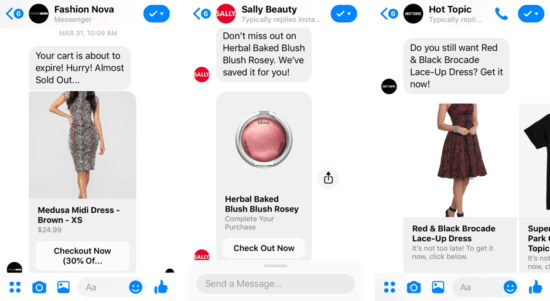No holiday shopping season is the same, but this year’s trends can help you prepare next year’s tactics
Despite being a US tradition, “Black Friday” kicks off the official holiday shopping season for buyers around the globe. But marketers know the promotional season starts much sooner, and what happened this year can be helpful in planning next year’s strategies.
Thanks to Thanksgiving’s late date this year, 2019 has six fewer shopping days than 2018 and three fewer than 2020. November 29th is the last possible date for Black Friday to fall, giving marketers six extra days to promote Cyber Week and pre-BFCM (Black Friday/Cyber Monday) deals.
The Cyber Week peak
‘Tis the season for retail email - 68% of consumers say they pay more attention to email during the holidays.
While early November promotions have trended in the past several years as marketers compete more and more aggressively for inbox attention, Cyber Week officially kicks off the Monday before American Thanksgiving.

Discounts deepen throughout the week
With 47% of consumers claiming they’ll only buy on sale this season, and 100% citing promo codes as the number one factor influencing holiday purchases, it’s no surprise that discounts began Monday, November 25th at an average of 23%, rising steadily to 30% by Black Friday. Cyber Week deals are anticipated to drive 30% of the season’s revenue.
Though Black Friday email volume rose 20% year-over-year, the majority of discounts remained flat, suggesting we’ve already hit the maximum site-wide margin retailers are willing to sacrifice. If you’re offering 30% off, you’re likely competitive enough. It’s timing, frequency, subject lines, segmentation and list health that will help you improve in 2020.
Free shipping and Cyber Monday deals table stakes
Online shoppers have grown to expect free shipping, with 78% of online retailers offering it on Black Friday. 92% of the top 50 online retailers offered Cyber Monday discounts. With Cyber Monday accounting for 25% of Cyber Week revenue, the National Retail Federation’s creation is too big to ignore.
It’s beginning to look a lot like ChristSMS
With mobile’s share of traffic, orders and revenue rising across Cyber Week, SMS is a promising tactic for retail marketers. SMS marketing leverages mobile notifications to bypass the inbox, and consumers are paying attention. SMS open rates are as high as 98% versus email’s 20%.
Black Friday SMS volume surged 148% year-over-year and 22% over Thanksgiving, but the medium has room to grow. Adding SMS options to email opt-ins, account registrations and checkout flows can help grow your list for 2020. In-store incentives for SMS sign-ups are another great tactic for omnichannel retailers.
Facebook Messenger remarketing is another emerging opportunity. Any mobile or desktop visitor that engages with your Messenger Chatbot automatically gets synced to “automated sequencing” campaigns through Facebook Ads where, besides sending coupons and offers, you can also recover abandoned carts.

Holidays get social
Mobile purchases referred by social media grew 41% across Cyber Week versus the same period in 2018. With 45% of retail marketing budgets going to paid social this holiday, and social commerce accounting for almost 30% of Cyber Week revenue this year, expect social marketing budgets to increase across the board in 2020.
Smart segmentation
If you held back your promotional email frequency this year for fear of overwhelming recipients and boosting unsubscribes, fear not -- shoppers are receptive and looking for Cyber Week deals.
But make sure you’ve considered smart segmentation strategies. Late-night shoppers (between 10pm and 2am) drove one-third of Cyber Monday revenue. Can you identify late-night openers, clickers and converters throughout the year? Are you pulsing your email deployment and testing response rates? Does your e-commerce platform recognize users in different time zones and honor discount codes based on local time-of-day?
Harsh winter weather was a contributing factor to the 6% drop in brick-and-mortar Black Friday sales (and online’s 14% uptick). Online shoppers in north-eastern states receiving two or more inches of snow placed 7% more orders. Consider preparing special email and SMS offers and messaging for extreme weather and deploying to geotargeted segments in 2020.
Leaping into 2020
With the Leap Year and Black Friday landing earlier on the calendar, you will have an extra three days to woo shoppers before Christmas, but Cyber Monday remains the top day for deal hunting and digital spending.
While 2019’s Cyber Weekend orders jumped 15% in the US and 12% globally, this may be influenced by Black Friday’s late arrival and the shortened shopping season. Saturdays and Sundays are typically slower than weekdays during the holidays for online retailers but extended Black Friday deals and early Cyber Monday offers can keep customers clicking.
Take a look at some more of the key insights from this Black Friday weekend with this infographic from Get Elastic.

Linda Bustos is an e-commerce analyst, educator and author at
Get Elastic. She’s a co-founder of the consultancy Edgacent and the
Ecommerce Illustrated blog. Connect with her on
LinkedIn and
Twitter.









